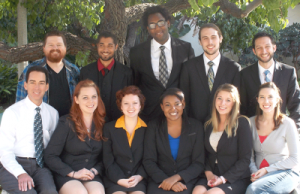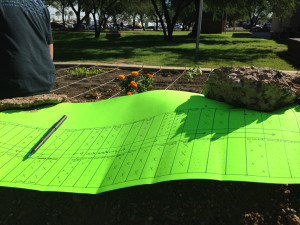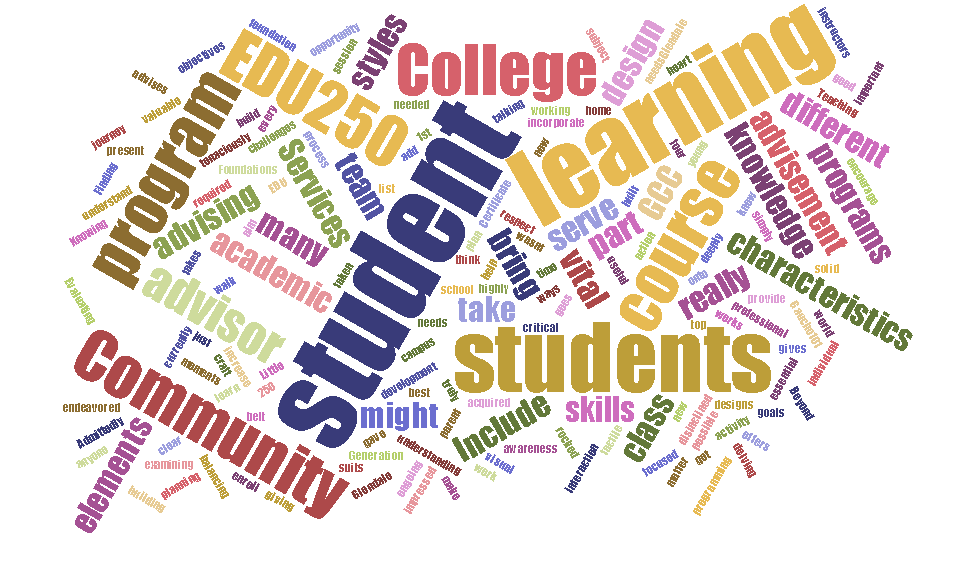
I promise that I am not being motivated by ice cream and chocolate chip cookies but here I am again at the end of week three of Write 6×6 and it’s time to share the wonderful exercise opportunities we have right here on our campus. Where’s the medicine?
GCC is in the running to receive national recognition for Exercise is Medicine on Campus. As part of the EIM-OC initiative, we are tasked to ensure that qualified fitness professionals are available on our campus to serve the needs of our community, which includes employees, students, and the general public.
We meet that need in two ways:
- We Train the Fitness Professionals!
- We Have Outstanding Staff and Facilities!
We Train the Professionals
Since 1983 we have prepared students to become certified fitness professionals in our Exercise Science and Personal Training programs. Our students gain the knowledge, skills and abilities to design and implement exercise programs and can immediately enter the workforce as Personal Trainers. Many choose to transfer to university and finish programs in Exercise and Wellness, Kinesiology, Physical Therapy, Athletic Training, and Dietetics, just to name a few.
In collaboration with the Food and Nutrition Department, we share the Exercise Science and Nutrition Club, where our students can combine their knowledge and skills to help promote fitness and health on campus and in the community. A recent scavenger hunt activity drew more than 100 excited participants, sending them running to all corners of the campus hunting for clues and enjoying the excitement of the competition.
We Have Outstanding Staff and Facilities:
We hire only the most qualified, certified fitness professionals who share their expertise with employees, students and the local community.
The Fitness Centers on the Main and North campus offer state of-the-art cardiovascular and strength training equipment and a myriad of free fitness classes including yoga, cycling, lap swimming, and boot camp style sessions.
The biggest difference that sets the GCC Fitness Center apart from its competition is its professional staff and exceptional customer service. A family-friendly location, we offer personal training, nutrition consulting, blood pressure and body composition checks, massage, incentive programs, great prizes, locker facilities and a towel service. There is always a degreed and certified instructor available to answer questions and assist with exercise programming.
Special discounts are available for veterans, high school students, nursing/EMT/firefighters, student athletes/dancers and students enrolled in the Exercise Science and Personal Training programs.
Our Sports Performance Lab, located in the LSA building, offers clinical fitness screenings and evaluations for faculty, staff, students and the community. Triathletes and sports professionals can take advantage of VO2max testing, blood lactate assessment, body composition, flexibility and strength analysis.
The Adapted Fitness Center designs fitness programs for individuals with disabilities and meets a very critical need in our community. Participants receive individualized attention and enjoy the benefits of exercise using specialized equipment with the help of highly trained staff.
Our Senior Fitness program draws a great deal of interest from the local community and accepts health insurance benefits such as SilverSneakers, Prime, Flex, Cigna Medicare and Silver & Fit. The classes are designed specifically for the senior population and cater to all levels of fitness.
The line-up of Physical Activity (PED) classes for college credit includes swimming, water exercise, line dancing, hiking, camping, Pilates, Tai Chi, Zumba, yoga…you name it, we have it. We also offer mind/body, wellness and recreation classes. Aromatherapy is one of our very popular wellness classes.
Spring 2015 Events for the Health-Minded
This year, we have collaborated with the Nursing Department on the Community Health and Wellness Fair, which will take place outside the Life Sciences Building on March 25th, 9 a.m. – 1 p.m. and March 27th, 1 – 7 p.m. We plan to promote Exercise is Medicine and launch a 50-mile walking incentive program during the month of April using a fitness tracking app developed at GCC. Participants will receive pedometers and completers will be entered in a grand prize drawing.
May is Exercise is Medicine Month. We plan to offer lunchtime fitness activities throughout the first week in May. Test your kickboxing skills, or try our yoga or Zumba! Stay tuned for more details on EIM Week!






